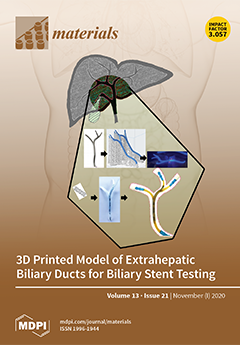Here, using Fe
3O
4@SiO
2 as a precursor, a novel core-shell structure magnetic Cu
2+ adsorbent (Fe
3O
4@zeolite NaA) was successfully prepared. Several methods, namely X-ray diffraction (XRD), Fourier transform infrared spectrometer (FTIR), Transmission electron microscope (TEM),
[...] Read more.
Here, using Fe
3O
4@SiO
2 as a precursor, a novel core-shell structure magnetic Cu
2+ adsorbent (Fe
3O
4@zeolite NaA) was successfully prepared. Several methods, namely X-ray diffraction (XRD), Fourier transform infrared spectrometer (FTIR), Transmission electron microscope (TEM), Brunauer Emmett Teller (BET) and vibrating sample magnetometry (VSM) were used to characterize the adsorbent. A batch experiment was conducted to study the Cu
2+ adsorption capacity of Fe
3O
4@zeolite NaA at different pH values, contact time, initial Cu
2+ concentration and adsorbent does. It is found that the saturated adsorption capacity of Fe
3O
4@zeolite NaA on Cu
2+ is 86.54 mg/g. The adsorption isotherm analysis shows that the adsorption process of Fe
3O
4@zeolite NaA to Cu
2+ is more consistent with the Langmuir model, suggesting that it is a monolayer adsorption. Adsorption kinetics study found that the adsorption process of Fe
3O
4@zeolite NaA to Cu
2+ follows the pseudo-second kinetics model, which means that the combination of Fe
3O
4@zeolite NaA and Cu
2+ is the chemical chelating reaction. Thermodynamic analysis shows that the adsorption process of Fe
3O
4@zeolite NaA to Cu
2+ is endothermic, with increasing entropy and spontaneous in nature. The above results show that Fe
3O
4@zeolite NaA is a promising Cu
2+ adsorbent.
Full article






